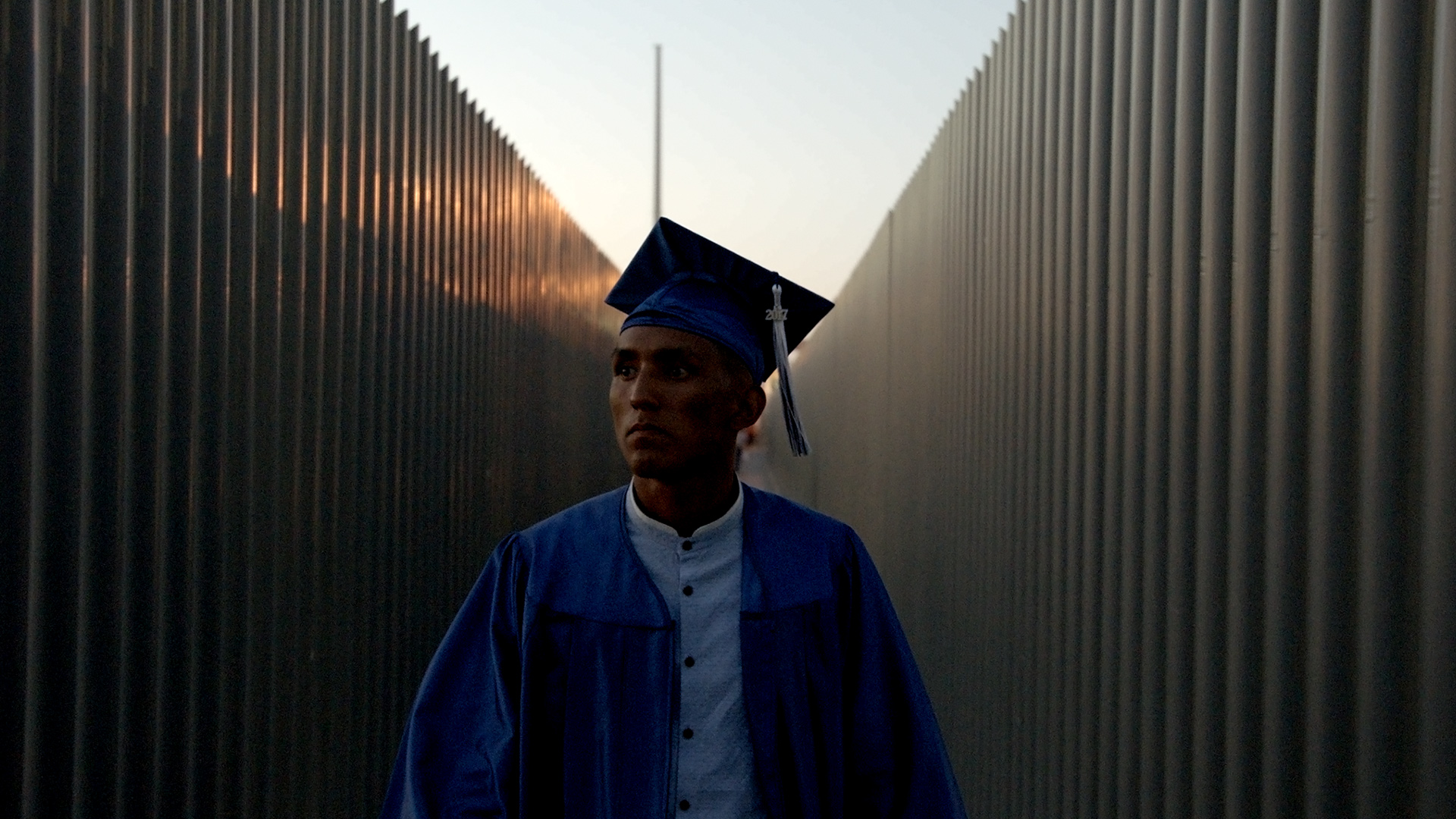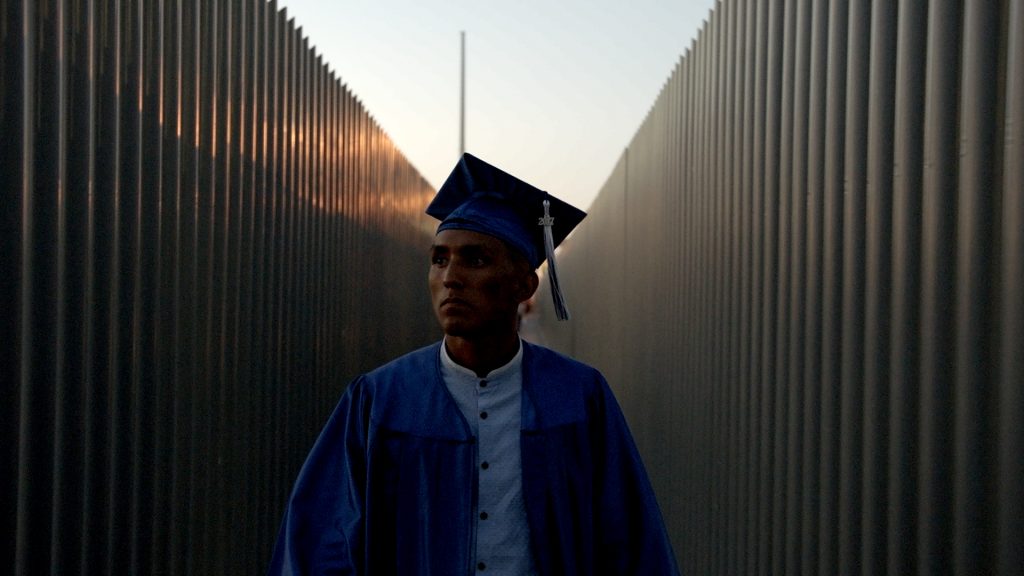The opening images of Matt Ogens’ film Home + Away seem pretty straightforward. We’re merely watching as Erik starts his daily walk to school. Only, like many of his schoolmates at Bowie High School, Erik begins his day in Ciudad Juarez, Mexico and must cross the border to El Paso, Texas in order to make his first class. This observational doc (don’t expect any talking heads discussing Trumpian rhetoric or the infamous wall) puts viewers right in the middle of the border life students at Bowie experience every day. In addition to Erik, who struggles in English class and finds comfort at soccer practice, Home + Away follows Shyanne, a star wrestler who’s considering joining the army and Francisco, who wishes his dad were allowed into the U.S. so he could make his baseball games.
Part coming-of-age story and part sports documentary (think Hoop Dreams meets The Other Side of Immigration for the DREAMer generation) Ogens’ film hopes to humanize the border. “There’s a lot of judgment that people makes on both sides of the debate and we forget about the people living there,” he told Remezcla. In focusing his camera on these three kids, following them as they wrestle with homework, deal with demanding but loving coaches, and spend time with their supportive families on both sides of border, Home + Away paints a picture of what it’s like to live in between two worlds.
He hopes it will inspire audiences to approach these issues with more empathy. “We should empathize and be curious instead of coming in with an opinion,” he told us. In that spirit, find five things we learned from this doc.
Home + Away premiered at the Tribeca Film Festival. Watch the trailer here.
Bowie High School Is the US's Closest School to the Border
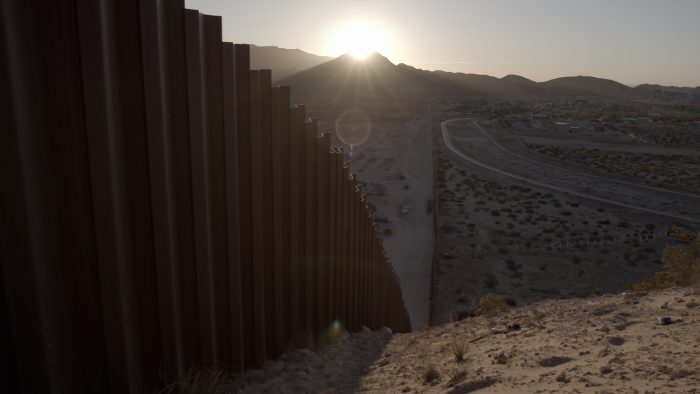
Given the focus on the topic of immigration, Ogens was clear on wanting to offer a different take on the border and Bowie seemed perfect. “What I found unique that I didn’t know was how many of the kids live in Juarez,” he said, “or have family and are commuting back and forth daily or weekly. I thought that was unique and worth investigating further. Because when it comes to the wall or the border, we’re often just hearing the bigger topic—the macro. Rarely do we really see the humanity of it, the characters on the ground, how they’re personally affected. I wanted to do more of a three-dimensional portrait of the border rather than just the general macro of it all.”
Just Filming on the Border Is a Political Act
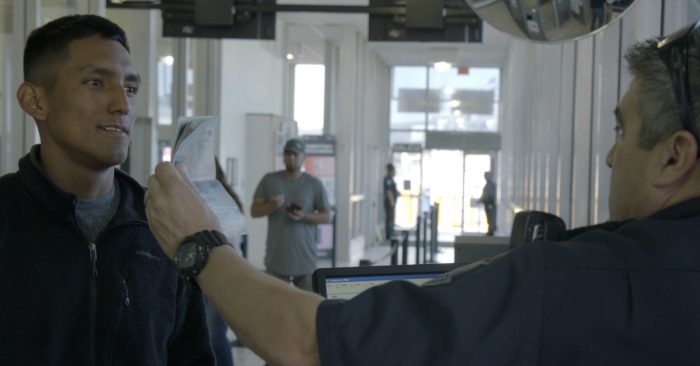
One of the most uncomfortable moments in the film comes courtesy of a classroom of students watching the Presidential inauguration on TV which prompts Shyanne to admit she’s scared and another student to say she hopes “the president gets the job done.” “I didn’t want to make it a political film,” Ogens shared. “It’s more of a setting, an environment, and we all know as an audience what’s going on. We already come in knowing the topic of the border. So in that regard I didn’t need to recap everything. I sort of just followed the kids. You see the border there and you come to your own conclusions. The closest we got is when we watch them watching the inauguration. It’s funny that scene is the first day of shooting: first scene we shot in the entire shoot! It’s not something we set up. They were just watching it. So I captured what was happening.”
El Paso and Juarez Are "Sister Cities"
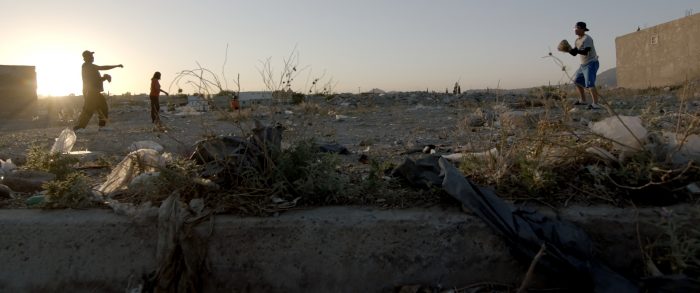
Ogens’ doc moves seamlessly between the two border cities, mirroring the ease with which the students it follows do—even when their own families are stuck sometimes on either side. But there’s a bustling border community being captured here. “There’s a lot of that not just between El Paso and Juarez but all across the border,” he noted. “Whether families coming across to work or families who have families on both sides, kids coming across coming for a better future. All along the border, it’s almost like along it are sister cities. They rely on each other. There’s commerce, there’s people. If you just stop that, it’d have massive effects on both sides.”
Sports Is an Escape for These Kids
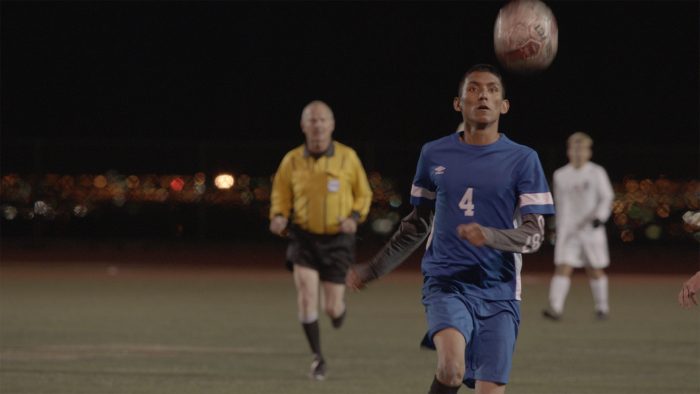
Part of being an immigrant, especially in a border town, is that need to prove oneself and to not be defined solely by where you’re from. In focusing on athletes, Ogens hoped to reflect that. “For teenagers [who play sports], for a couple of hours a day they don’t have to think about poverty, about grades, about cartels if you live in Juarez. They can just be teenagers. And even though that’s the case, Bowie High School is kind of looked down upon in El Paso. They stereotype them. So, even within sports they have to prove themselves. They don’t have great equipment or funding for sports so they still, even on the court, or the mat or the field, have to prove themselves. Which I thought was a good metaphor for what they’re dealing with in life.”
Activism Along the Border Is "Not That Loud"
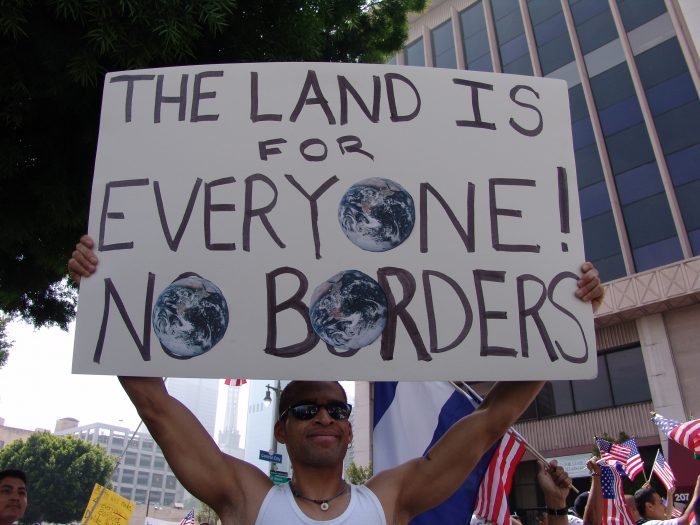
If politics with a capital P is absent from the film, it is because, as Ogens shared, you just don’t see that as much when you’re on the ground. “We’ve seen marches in LA and NYC and in the big cities about the wall but there it’s not that loud,” he acknowledged. “People aren’t that loud about it. Sure, there’s some activists and there are some marches, but I’d say the marches in the bigger cities are even bigger.” He has some ideas as to why that is: “people down there are dealing with the immediate. Which is, you know, putting food on the table for their families, working, that kind of thing. They don’t all have time to be activists. The other thing is that they’re still teenagers and they’re dealing with high school stuff. And the third thing is, in their communities they’ve sort of been taught to not call too much attention to their families because maybe they’re related to someone who’s undocumented or someone who’s trying to get a visa, or whatever and don’t want to raise hell about it.”



